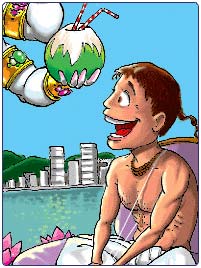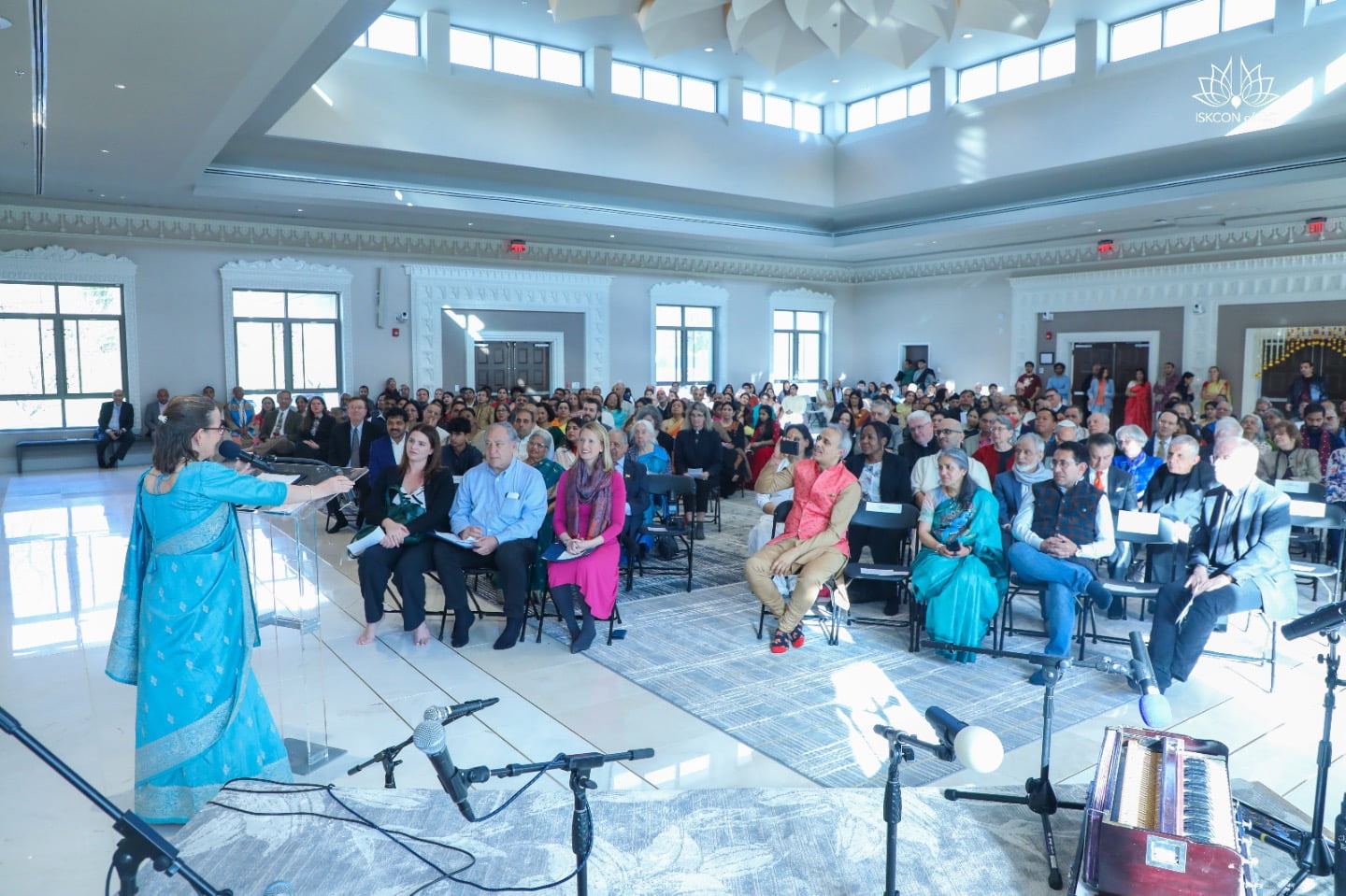The Mirror of Cartoon Satire
By Akhandadhi Dasa | Sep 11, 2007

In an advertisement on UK television, some reformed Daleks tag along a group of Hare Krishna devotees chanting down the street. Renouncing their exterminating ways, these alien miscreants happily sing in metallic voices, “Peace & Love, Peace & Love”.
I feel proud that my religion is depicted in this way. Sure, there are negatives, but, at least, this advert is indicative of how the public regards the Hare Krishnas. When you want to characterise peace and love – who springs to mind? The devotees. Considering the reaction of the public to organised religion in these troubled times of religious strife, war and terrorism – this is perhaps as good as it gets.
It’s not all positive in the media, however. ISKCON sometimes suffers from the depiction that it is a little too other-worldly. Cartoons, comedy sketches and adverts play on that image and promote it. Krishnas are nice, harmless, doing a bit of good, but essentially irrelevant when it comes to the big issues of the real world. That image hurts me, because I know how much our philosophy has to offer society in all aspects of life.
So, do I feel sympathy for the followers of Islam who are aggrieved by the cartoons of the prophet Mohammed printed in the Danish newspaper, Jyllands-Posten? Yes and no.
Yes, I can understand how upsetting it is to see sacred personalities belittled by people who really have no concept of who they are dealing with. I would be desperately hurt and angry if ISKCON’s founder, Srila Prabhupada, was depicted badly in a newspaper. But, would I call for retribution? We may be able to point a finger at the uninformed, callous cartoonist, but, as we are warned in kindergarten, three other fingers are pointing back at ourselves.
Comedy and social/political/religious satire have a valuable role in society. They hold up a mirror and reveal what we look like to others. Sometimes it’s a shock. I may not like the image propagated by the media, but I would be foolish not to realise that it represents the public perception.
I have witnessed appalling news articles written about ISKCON, but often stimulated by real mistakes of the devotees. The media exaggerates and sensationalises, but usually there is a kernel of unsavoury fact. Sometimes, and this hurts the most, the behaviour of the devotees has been so grievous that it has caused the media to question the teachings of ISKCON – and, by the next logical step, to throw dispersion on Srila Prabhupada. It’s not the reality of ignorant hacks anxious to sell a few more copies that hurts – it’s when we, ourselves, have caused a situation that reflects badly on our movement, our philosophy, and our founder.
I believe that the recent protests in London and around the world in complaint at the Danish cartoons are a disgrace to Islam. No matter how upset you are over somebody’s depiction of your faith and prophets; I don’t accept that it gives anyone the right to commit violence or to issue threats. These protests have served only to substantiate the opinion of the infidel world that Muslims are too ready to resort to hostility and aggression against anyone who crosses them. Despite the many millions of peaceful, devout and highly spiritual Muslims, there seem to be more than a few who are willing to cause death and destruction in the name of God. Either they are so far out of line with Islamic teaching that their ideas should be drowned out by vocal moderates or there is something in the theology that needs closer scrutiny.
Rather than call for the punishment of the European press, I feel that the Muslim community needs to look in the mirror of these cartoons and ask itself some tough questions. How has it come to the point that the behaviour of some of our people has caused dispersion to be cast not only on our faith, but even on our prophet?
But, do I think that the Danish newspaper was right to publish the cartoons in the first place? No.
I do believe in the value of free speech. I want to have the freedom for myself to announce that “Krishna is the Supreme Personality of Godhead”. Therefore, I must accept the right of someone else to say the opposite. Jyllands-Posten had the right to publish, but, as has been said by many already, having the right to do something, doesn’t mean that you should do it. The Bhagavad-gita states that austerity of speech can be summarised as "satyam bruyat, priyam bruyat" – speak the truth and speak it pleasingly.
Even if we feel we have something valuable to communicate, it is best done in a sensitive fashion – especially if it contains an unpalatable truth. A satirical message which caricatures others but is disseminated solely amongst one’s own tribe cannot claim to be serving a broader good. It is more likely to be an incitement to ridicule and, possibly, worse. It is part of the problem, rather than the solution.
The same is true of our response to perceived injustice and offence. If something needs correction, let it be done in a manner that is consistent with our message. If ever we are criticised for being nasty, the only way to respond is by being thoroughly nice; upset OK, but, still, nice
As a person of faith, I will happily support my brothers and sisters of other religious traditions against insensitive or malicious misrepresentation of their sacred icons and personalities. But, all I ask is that each one of us plays our part in demonstrating that religion of whatever flavour is a force for peace and love.












